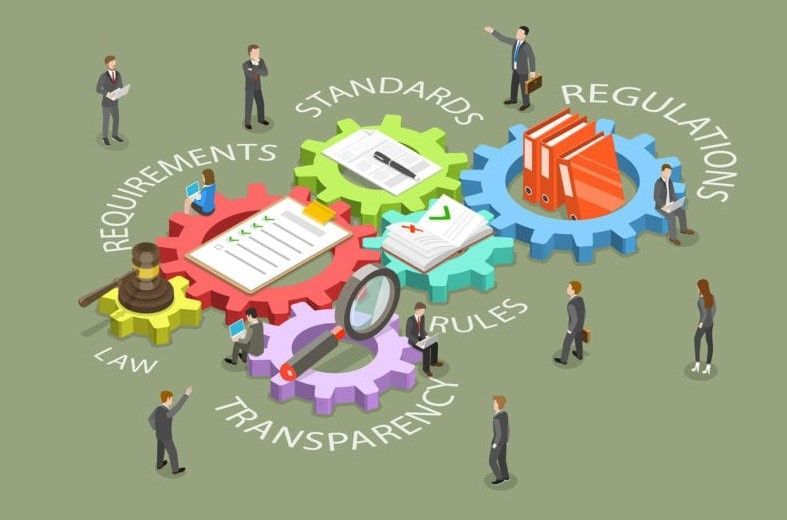Online Marketing: Hard-Earned Insights
August 14, 2025
How can we understand the wizardry that is today’s marketing–and what it can, and cannot, do?
Thanks in part to steadily improving online functionality, marketing has changed dramatically in the past ten years. And, thanks to the pandemic, marketing has changed even more dramatically in just the past year.
We’ve all seen it “in the news.” But here at Productive Strategies we’ve also seen it in our relationships with prospects, clients, vendors, and others in the day-to-day business mix. You have, too, no doubt. But seeing, understanding, and applying are three different things. Selling and marketing changes have opened new opportunities for services in our own business and allowed us to advise others on opportunities—and challenges—in their businesses.
So, what have we found, what have we done, and what do we advise?
One new skill-building hoop we’ve helped our clients jump through is to answer a question: How do you take advantage of new channels, both those new only to you or, in fact, new to the world?
Ironically, two traditional, tried-and-true answers apply: “It depends” and “very carefully.”
 Many people claim to know
how to optimize pay-per-click advertising, for example. But how many actually do? Surprisingly few, in our experience. And for good reason. While the PPC concept is simple to understand, making it work is not. There are just too many nuances, and the search engines keep changing them by changing the rules.
Many people claim to know
how to optimize pay-per-click advertising, for example. But how many actually do? Surprisingly few, in our experience. And for good reason. While the PPC concept is simple to understand, making it work is not. There are just too many nuances, and the search engines keep changing them by changing the rules.
The pay-per-click advertising programs offered by the major search engines are complex. And, not surprisingly, search engine salespeople seem to strive to produce volume, which essentially translates into “more hits.” Accounts, again in our experience, may well be configured mainly to grow sales, yes, but in a way that can be a big waste of your time.
Take our case. We offer about 30 business development products and services. We focus on consultative sales training and lead generation in business-to-business environments and several support tools, such as marketing, marketing communications, and sales and marketing alignment. So, “sales” are indeed what our prospects and clients are interested in—but “sales” in a specific way: a critical point the search engine we used (and still use, by the way, though more productively) didn’t quite pick up on until we figured out that we had to explain it to them more clearly.
“Today, it’s not about Get the traffic.
It’s about Get the targeted and relevant traffic.
”
—Adam Audette
This search engine suggests you provide thousands of words that describe what you do. If you don’t, can’t, or won’t, they will provide those words for you. Unfortunately, they’re seemingly satisfied with words that elicit as many clicks as possible, but aren’t necessarily those that hit the target. We’re satisfied only with bullseyes.
You see the problem. Which we didn’t until . . . we discovered that our search engine salespeople, who tend to come and go too often for our taste, added hundreds of words that would attract attention but had very little, if nothing, to do with our work. While we provided such keywords as consultative sales training, business-to-business selling, and B2B lead generation , the search engine also posted keywords like sales sales sales and best sale ever . Who checks out words like that? Pretty much everybody.
The responses, of course, required us to devote time and energy to prospects who really weren’t prospects. (Taking minimal time and energy, true, but still a distraction that our business—or any business—can ill afford.)
But, as usual, we like to see such experiences as glass-half-full opportunities instead of glass-half-empty failures.
 So, once we removed the “bad,”
or at least irrelevant, words suggested by the search engine and added more of our own “good” words, we began to see immediate results. We now offer search engine optimization services to our clients because we realize that the “sales support” from the search engines themselves can be inadequate and even many of the consultants in this still-evolving space haven’t mastered the process.
So, once we removed the “bad,”
or at least irrelevant, words suggested by the search engine and added more of our own “good” words, we began to see immediate results. We now offer search engine optimization services to our clients because we realize that the “sales support” from the search engines themselves can be inadequate and even many of the consultants in this still-evolving space haven’t mastered the process.
We do perform pieces of the work in which we have expertise ourselves—content development strategy, copywriting, and aligning marketing and sales, for instance. But an invaluable piece of our service, we’ve found, is to help clients simply to find the SEO expertise that’s right for them and their businesses. Something you could do yourself? Sure, but at what cost? As we’ve learned, and just explained, knowing how to navigate the turbulence of cyberspace marketing can be extremely valuable.
“Things don’t have to change the world to be important.”
—Steve Jobs
And that’s not all: Two things to know about LinkedIn.
First, when you post to LinkedIn your message does not go to your entire network as many people suspect it does. For efficiency’s sake, LinkedIn uses an algorithm to see how many people like and share your post. If there is quick response, and activity related to liking and sharing, LinkedIn sends the post to another group within your network. Recently, our video on sales funnels received more than a thousand views. We did notice that the responses came in waves as the popular video was released to more of our network, and as other people shared our post and got reactions from their network.
Second, there are two ways that we benefit from LinkedIn and that you might, too. The first is using it to find people in our network who change jobs. We send out a new edition of the column you are reading now once a month to thousands of clients, prospects, and people in our network. It keeps us top of mind with people who may not have a current need. We take the bounces from our e-mailing and use LinkedIn to find out where people have moved to. Another use is that sometimes we have been unable to find the people, but because we are still linked to their personal e-mail, they see posts we make on LinkedIn. We recently picked up new business from someone who had dropped off our regular e-mail-blast list, but to whom we were still connected. He read one of our posts and brought us some new business.
Finally, in with the old. While recently moving our offices within the complex we’ve enjoyed for the past 25 years, we discovered an embarrassingly large amount of sales support material printed in volume over the years to get attractive pricing. Although we do find that direct mail still works, but not always in the same way, we had in fact cut back on our own mailings.
Now, however, we see an opportunity to use these valuable marketing materials, even though our mailing address is not quite the same. (Normally, we don’t believe that “close enough is good enough,” but in this case we saw fit to ignore the rule—a good thing to do, occasionally.) Our plan now is to drop a major direct-mail campaign to the thousands of already targeted customers, prospects, and others in our database. That direct mail advertising is not used as much right now means it should attract attention and will yield a good return on investment. At least that’s what we’re hoping. We’ll let you know in a future column.
What experiences have you had with online marketing? What have you noticed that others might benefit from knowing? Please share them with us and we’ll try to share some of them in this column.
In any event, please get in touch with us
if you’d like to talk about your sales processes and training, lead generation, or marketing or other business development options. We’re still at 847-446-0008 and pkrone@productivestrategies.
The post Online Marketing: Hard-Earned Insights appeared first on Productive Strategies, Inc..










